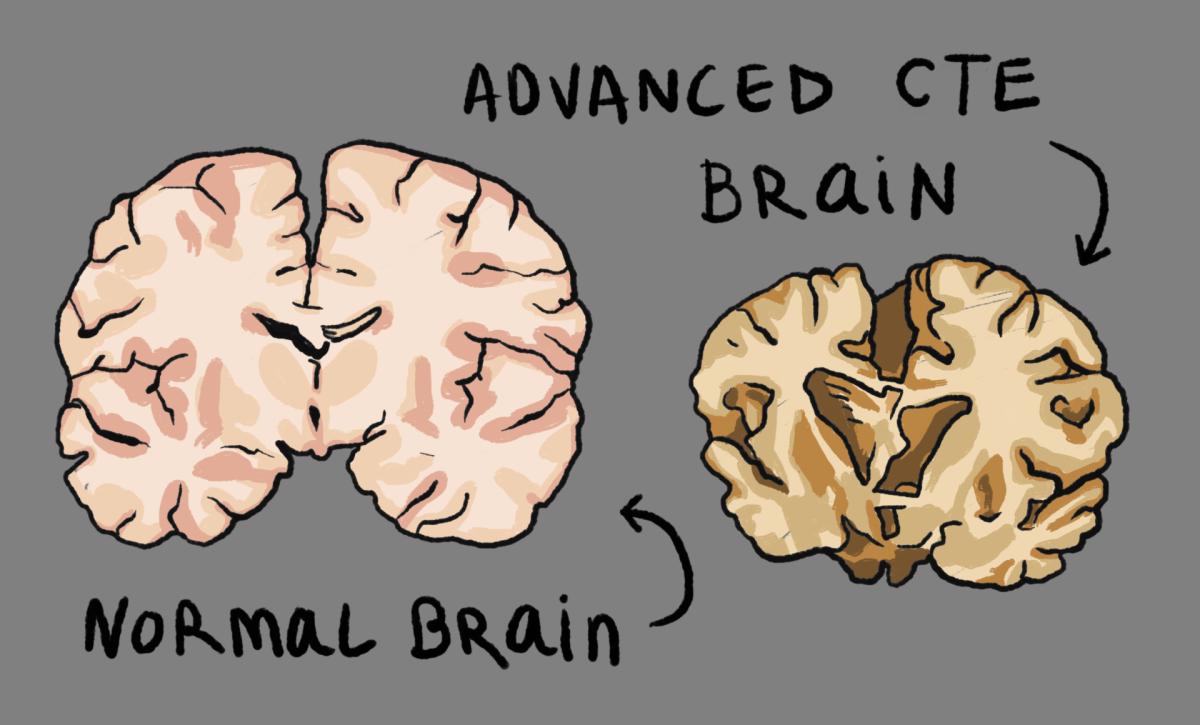Imagine being one of the best linemen ever in the history of the National Football League: a household name, the center for Terry Bradshaw (quarterback) and the star-studded Pittsburgh Steelers.
Mike Webster was fantastic, putting his head on the line to help his quarterback and team. Yet it all went downhill after his career. A lineman, a man who sticks his head forward, slamming it into others, probably had a knock or two to the noggin. He experienced erratic behavior, and despite having the money or at least the offers from his former teammates, he lived on the road, typically in his truck. Going missing for weeks, he had difficulty falling asleep, resulting in shocking himself with electricity to faint for the night. In 2002, at the age of 50, his body was found in his truck, and a local forensic neuropathologist, Bennet Omalu, decided something was fishy. These acts were not ordinary, and it wasn’t just a particular case of a football player who happened to have mental illnesses.
After looking at the brains of multiple deceased players who displayed erratic behavior, Omalu found they all had the same brain injuries. The brain was yellow, more crumbled up, and with big black spots. Omalu published his findings, hoping the NFL would be receptive and look at the problem, but his research was dismissed and called a falsity. The brain injury committees of the NFL called for the paper’s retraction.
Chronic traumatic encephalopathy.
Referred to as CTE, it is not commonly known. What is CTE? Are you at risk?
CTE is a neurodegenerative disease that is irreversible and leads to dementia. It is only diagnosable at autopsy, but symptoms are unmistakable. An example is Aaron Hernandez, a 27-year-old tight end for the Patriots who was violent and then killed someone before committing suicide in prison. Even at a young age, he had stage 3 CTE from his time at all levels of football.
It shows that the development isn’t just in the hard-hitting professionals but at the high school and collegiate levels as well. Not every football player will get CTE, even the ones who suffer a concussion or two, but when looking at the brains of past players, researchers found 21% of players who only played in high school have at least stage 1 CTE.
Confusion, disorientation, dizziness, and migraines are early-stage symptoms. Memory impairment, social anxiety, erratic conduct, and poor judgment are all symptoms of the second stage. Growing dementia, mobility challenges, hypomimia, speech impairments, cognitive dysfunction, tremors, vertigo, deafness, grief, and suicidality are all symptoms of the third and fourth stages.
It is dementia on Amazon Prime, straight to your skull. Men at the age of 50 have the brain of a 90-year-old just because of contact sports and subsequent brain injuries. It is worth noting that one does not need to contract CTE to have all these consequences. A little permanent head trauma will do just the trick.
Still, to this day, concussions happen left and right in the NFL and other contact sports like hockey and MMA. However, MMA knows what they are getting themselves into, and it’s a brutal sport on purpose. Surprisingly, the CTE stats in hockey don’t seem as prevalent as in football, so maybe they are doing something right.
However, football remains the same. The NFL makes commercials on how they have partnered with Amazon Web Services to create Next Gen Stats, and this group looks at head-injury statistics to prevent further cases. Okay, that is cool and all, but how? They don’t show how, and they repeat the same thing: “We are working to make football safer for everyone involved.”
Tua Tagovailoa, the quarterback for the Miami Dolphins, got knocked down in Week 3 of last year, standing up but stumbling around, obviously disoriented. At halftime, they checked, and he said he was good to go, resulting in him returning to the game and playing the rest of it.
The following week, he was knocked out and, after gaining consciousness, was sent to the hospital. Laying on the field, his fingers were inhumanly sprawled in every direction. It was blatant this was a hit that would cause at least a degree of brain damage, yet he was cleared from concussion protocol and played two weeks later. Two weeks is nothing for a concussion, especially for one that makes your body revolt in a way it shouldn’t, and even more so when, a week prior, you were stumbling around.
It shows that much needs to be done in the medical field of professional sports. Martial arts, rugby, hockey, football, and yes, even soccer (headers, collisions, tripping, etc.) need to do something. Nowadays, coaches try to teach their kids to hit with the shoulder and body, to wrap around their opponent instead of lowering the head on purpose like was done in the past.
So yes, progress exists, and awareness grows. But you can never be too aware or cautious. If you have pre-existing symptoms of head trauma, think twice or consult your doctor before playing a contact sport such as the ones mentioned earlier. Having chronic headaches is not a good sign, or if you have already had two or more concussions in your life.
A doctor may develop a revolutionary helmet that absorbs all the contact, but probably not. One can hope. In the meantime, keep enjoying your sports, protect your head, and don’t do anything that will have you thinking your partner is a squirrel in 20 years.














